I asked an answered a question here:
How to vary between child and parent view group touch events
The parent (drawer) ontouchevent is being fired, rather than the child, listview.
I have also answered a similar problem here:
https://stackoverflow.com/a/28180281/3956566
You need to manage your touch events so it is handled by the child. You need to use an onInterceptTouchEvent and return false.
@Override
public boolean onInterceptTouchEvent(MotionEvent ev) {
// returning false means the child will handle the touch event.
return false;
}
You then manage you touchevent for the list view:
@Override
public boolean onTouchEvent(MotionEvent ev) {
// This method will only be called if the touch event was intercepted in
// onInterceptTouchEvent
// TODO Select your listview item.
}
You can also determine what type of touch event is taking place eg, scrolling and determine whether the child or parent will manage the event.
Managing Touch Events in a ViewGroup
I've added this quote from here Understanding Android Input Touch Events System Framework (dispatchTouchEvent, onInterceptTouchEvent, onTouchEvent, OnTouchListener.onTouch):
The root view starts dispatching the event down to its children. Let’s
presume that we have this hierarchy:
A – ViewGroup1 (parent of B).
B – ViewGroup2 (parent of C).
C – View (child of B)
– receives a touch/tap/click. Now the root view will call
A.dispatchTouchEvent(). Now the job of a ViewGroup.dispatchEvent()
(not View.dispatchEvent()) is to find out all the child views and view
groups whose bounds contain the touch point coordinates (using a hit
testing algorithm). When it figures out a list of relevant children,
it starts dispatching the events to them by calling their
dispatchTouchEvent().
Here’s an important piece though. Before the dispatchTouchEvent() is
called on the children, the A.dispatchTouchEvent() will first call
A.onInterceptTouchEvent() to see if the view group is interested in
intercepting the event and handling the subsequent gesture by itself
(scrolling is a good use case where a fling on B should lead to
scrolling on A). The method onInterceptTouchEvent() is only available
on view groups (as they’re the one who can be parents/containers with
the requirement to intercept touch events) that can sort of keep an
eye on the event and hijack it by returning true. If it returns false
then dispatching continues as usual, i.e., B.dispatchTouchEvent()
(child) will be called. But on returning true, this is what’ll happen:
ACTION_CANCEL will be dispatched to all the children.
All the
subsequent gesture events (till ACTION_UP/ACTION_CANCEL) will be
consumed by the event listeners (OnTouchListener.onTouch()) if
defined, else the event handler A.onTouchEvent() at A’s level.
A.onInterceptTouchEvent() itself will be never called again.
With this diagram:

Let me know if you need more explanation.

